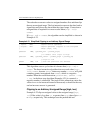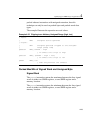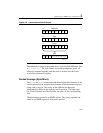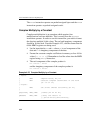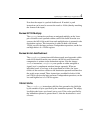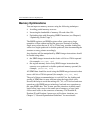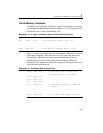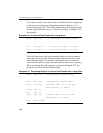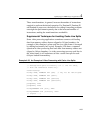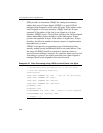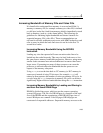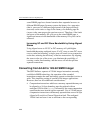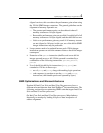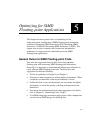
IA-32 Intel® Architecture Optimization
4-36
Let us now consider a case with a series of small loads after a large store
to the same area of memory (beginning at memory address
mem) as
shown in Example 4-26. Most of the small loads will stall because they
are not aligned with the store; see “Store Forwarding” in Chapter 2 for
more details.
The word loads must wait for the quadword store to write to memory
before they can access the data they require. This stall can also occur
with other data types (for example, when doublewords or words are
stored and then words or bytes are read from the same area of memory).
When you change the code sequence as shown in Example 4-27, the
processor can access the data without delay.
Example 4-26 A Series of Small Loads after a Large Store
movq mem, mm0 ; store qword to address “mem"
:
:
mov bx, mem + 2 ; load word at “mem + 2" stalls
mov cx, mem + 4 ; load word at “mem + 4" stalls
Example 4-27 Eliminating Delay for a Series of Small Loads after a Large Store
movq mem, mm0 ; store qword to address “mem"
:
:
movq mm1, mem ; load qword at address “mem"
movd eax, mm1 ; transfer “mem + 2" to eax from
; MMX register, not memory
psrlq mm1, 32
shr eax, 16
movd ebx, mm1 ; transfer “mem + 4" to bx from
; MMX register, not memory
and ebx, 0ffffh



